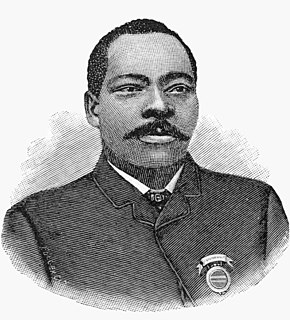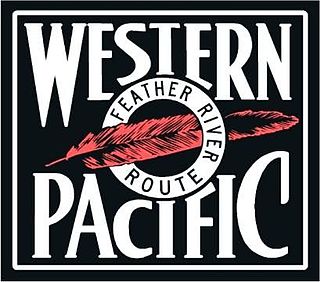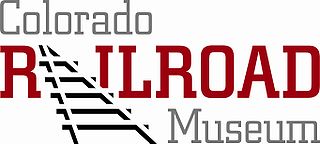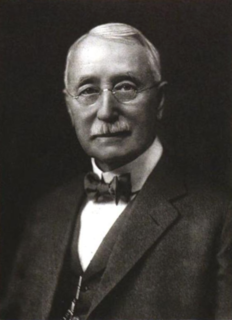Related Research Articles

The Denver & Rio Grande Western Railroad, often shortened to Rio Grande, D&RG or D&RGW, formerly the Denver & Rio Grande Railroad, was an American Class I railroad company. The railroad started as a 3 ft narrow-gauge line running south from Denver, Colorado, in 1870. It served mainly as a transcontinental bridge line between Denver, and Salt Lake City, Utah. The Rio Grande was also a major origin of coal and mineral traffic.

Harold Pitney Brown was an American electrical engineer and inventor known for his activism in the late 1880s against the use of alternating current (AC) for electric lighting in New York City and around the country.

Granville Tailer Woods was an American inventor who held more than 50 patents in the U.S. He was the first African American mechanical and electrical engineer after the Civil War. Self-taught, he concentrated most of his work on trains and streetcars. One of his notable inventions was a device he called the Synchronous Multiplex Railway Telegraph, a variation of induction telegraph which relied on ambient static electricity from existing telegraph lines to send messages between train stations and moving trains. His work assured a safer and better public transportation system for the cities of the United States.

William Jackson Palmer was an American civil engineer, veteran of the Civil War, industrialist, and philanthropist. During the American Civil War, he was promoted to brevet brigadier general and received a Medal of Honor for his actions.

The Western Pacific Railroad was a Class I railroad in the United States. It was formed in 1903 as an attempt to break the near-monopoly the Southern Pacific Railroad had on rail service into northern California. WP's Feather River Route directly competed with SP's portion of the Overland Route for rail traffic between Salt Lake City/Ogden, Utah, and Oakland, California, for nearly 80 years. The Western Pacific was one of the original operators of the California Zephyr passenger line.

The Colorado Railroad Museum is a non-profit railroad museum. The museum is located on 15 acres (6.1 ha) at a point where Clear Creek flows between North and South Table Mountains in Golden, Colorado.

The Ghost Town & Calico Railway is a 3 ft narrow-gauge heritage railroad and amusement park attraction within Knott's Berry Farm, an amusement park located in Buena Park, California.
David Halliday Moffat was an American financier and industrialist.

The Chicago Railroad Fair was an event organized to celebrate and commemorate 100 years of railroad history west of Chicago, Illinois. It was held in Chicago in 1948 and 1949 along the shore of Lake Michigan and is often referred to as "the last great railroad fair" with 39 railroad companies participating. The board of directors for the show was a veritable "Who's Who" of railroad company executives.

Alfred Edward Perlman was a railroad executive, having served as president of the Penn Central Transportation Company and its predecessor, the New York Central Railroad.

Albert Kingsbury was an American engineer, inventor and entrepreneur. He was responsible for over fifty patents obtained between the years 1902 to 1930. Kingsbury is most famous for his hydrodynamic thrust bearing which uses a thin film of oil to support weights of up to 220 tons. This bearing extended the service life of many types of machinery during the early 20th century. It was primarily outfitted on Navy ships during World War I and World War II.

Edward Eugene Loomis was President of the Lehigh Valley Railroad from 1917 to 1937.

Cassius Milton Wicker was a railroad manager and banker.

Edward Turner Jeffery was an American railroad executive.

Wilson McCarthy was an American attorney, jurist and railroad executive.
Gale B. Aydelott, better known as "Gus Aydelott," was an American railroad president. He headed the Denver and Rio Grande Western Railroad for nearly three decades.

Sidney Howe Short was an electrical engineer, inventor, physicist, professor and businessman. He is known for the development of electric motors and electric railway equipment. His inventions were so successful that even his competitors dubbed him "The Trolley King". He also developed telephone equipment much like that of Alexander Graham Bell. As a businessman he was president, key engineer, or advisor of different companies related to electrical equipment. It is claimed that he had nearly as many electrical innovations as Thomas Edison.
John Robert Suman was a geologist, petroleum engineer, and business executive.
References
- ↑ "Herbert Herr Thacker Biography".
- 1 2 3 4 "Herbert T. Herr, Inventor, Is Dead". The New York Times. December 20, 1933. Retrieved March 5, 2015.